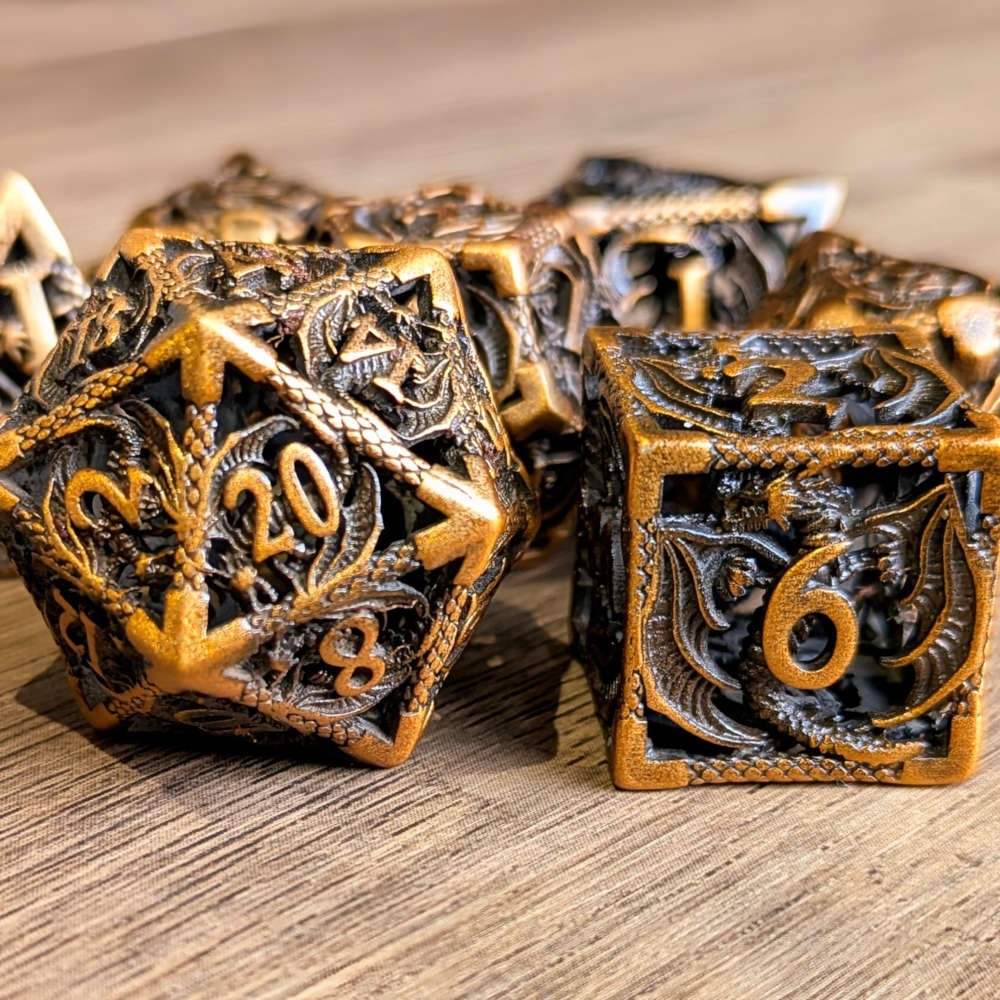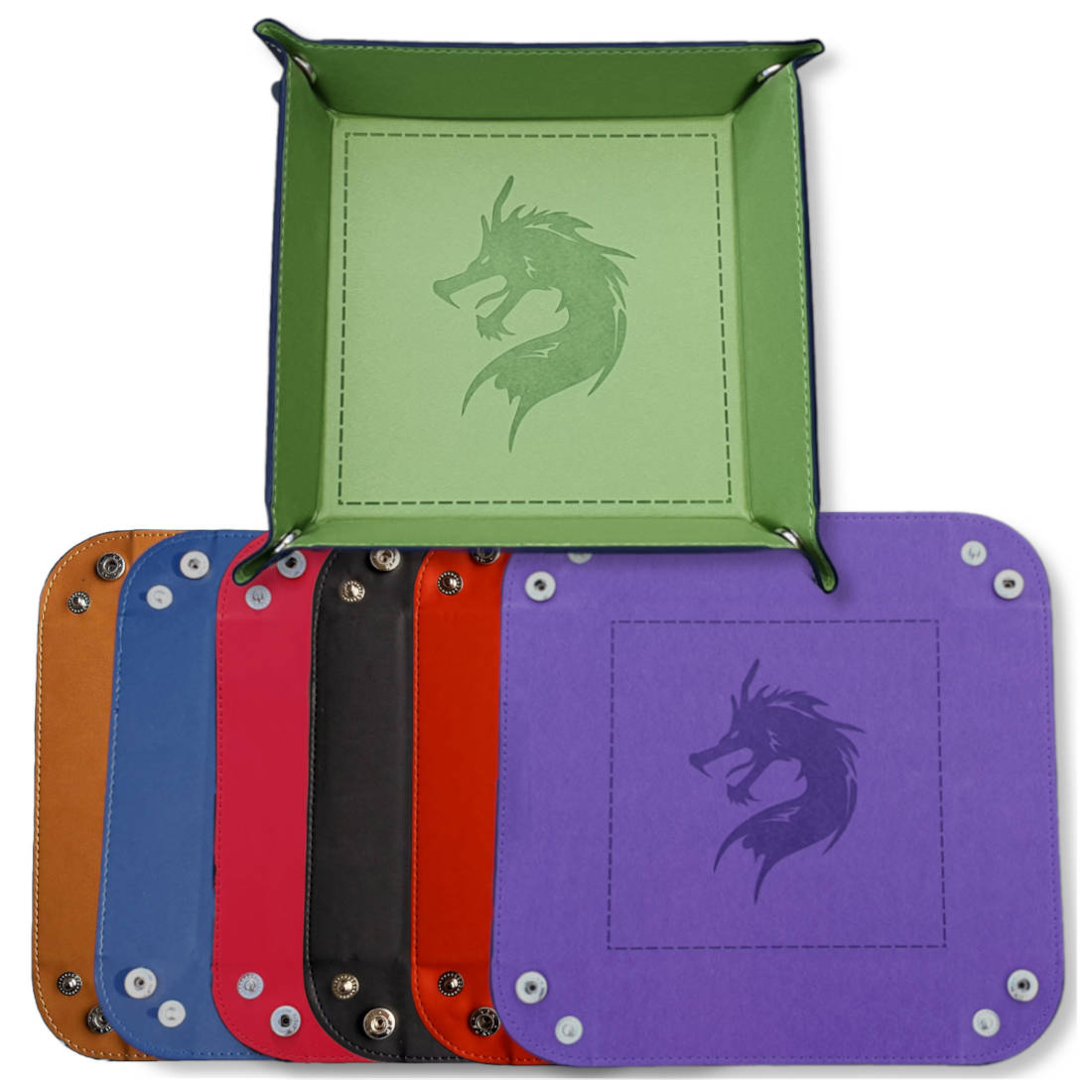Pseudodragons in 5e

Despite their small size, pseudodragons are intelligent and curious, making them fascinating companions for adventurers. These pint-sized dragons can offer a unique and charming addition to your party as you journey through the realms of D&D.
In this guide, we'll explore all you need to know about pseudodragons. We'll also share an official statblock and some homebrew ideas to inspire you to add these delightful creatures into your campaign.
What is a pseudodragon?
A pseudodragon is a cat-sized creature that looks like a miniature dragon, with sharp teeth, small horns, wings, and reddish-brown scales. Despite their dragon-like appearance, they have a neutral-good alignment and are known for their playful, reclusive, and wary nature.

Credit: D&D Beyond.
These elusive creatures prefer to live in quiet and secluded areas, such as tree hollows in forests or remote caves, far away from civilisation. When a pseudodragon encounters other creatures, which they try to avoid, they use their poisonous stinger on the tip of their tail to deliver a paralysing shock. This allows them to escape to a safe and undisturbed location, avoiding further confrontation.
What is the difference between a pseudodragon and a dragon?
While pseudodragons share many characteristics with dragons and are often mistaken for them, the ‘pseudo’ prefix indicates they are not true dragons. Pseudodragons are smaller, more fey-like creatures, resembling dragons but lacking the size and power of metallic dragons and gem dragons.
Pseudodragon 5e stat block
A pseudodragon in D&D 5e has a walking speed of 15 feet and a flying speed of 60 feet. Its ability scores are well balanced, with traits like Keen Senses, Magic Resistance, and Limited Telepathy, allowing them to communicate simple ideas telepathically with any creature within 100 feet.

When it comes to actions, a pseudodragon can Bite and Sting in combat. Its Bite is a straightforward melee attack, while its Sting delivers a poisonous effect that can paralyse a target. Given their unique abilities and telepathic link with their masters, pseudodragons can be both useful and engaging familiars for spellcasters who can access them through the Find Familiar spell. They can also serve as delightful pets in any campaign, bringing a touch of whimsy and magic to your adventures!
Can you have a pseudodragon as a familiar?
Yes, you can have a pseudodragon as a familiar, but this is specifically limited to Pact of the Chain Warlocks. The standard Find Familiar spell won't allow you to summon a pseudodragon as your companion (unless your DM allows you to do so).
What can a pseudodragon familiar do?
A pseudodragon familiar may be small and vulnerable, but its mobility, telepathic link, and poisonous sting attack can be invaluable for its master's safety during travels.
Can pseudodragons be any colour?
In the 5e Monster Manual, pseudodragons are depicted as red. However, with your DM's discretion, you might encounter pseudodragons in other colours resembling the chromatic dragons found across various regions.

Above: A green pseudodragon (drawn by Ryota Murayama) sits on their master's desk, its eyes twinkling with curiosity as it watches its master at work.
Can pseudodragons turn into dragons?
No, pseudodragons in D&D 5e can't turn into dragons; they're distinct creatures. While you can't transform them into dragons, a clever use of the Enlarge/Reduce spell could make one double in size. This won't turn it into a dragon or enable flight, but it could be an amusing twist!
Can you play as a pseudodragon?
No, you can't play as a pseudodragon or play as a dragon in D&D using the official 5e rules. However, with some homebrew creativity, you could adapt pseudodragons into a playable race, as they were in earlier editions of D&D.
Add a draconic touch to your gaming table
At Dice Dragons, we understand the allure of dragons. That's why we offer a curated range of draconic-themed wares to enhance your gaming experience. With our dragon-themed accessories, you can bring a bit of the mystical world of dragons to your gaming table!
Keep your campaign notes organised with our dragon notebooks, show off your dice with our dragon dice holder, or add a whimsical touch to your notebooks, laptops, and more with our dragon stickers.
Frequently asked questions about pseudodragons
How do you tame a pseudodragon?
Taming a pseudodragon requires patience and respect. While pseudodragons are selective in choosing companions, they can be won over with gifts or treats. Once a bond is formed, they remain loyal as long as they are treated fairly. However, they won't tolerate mistreatment and will leave a manipulative or abusive companion without hesitation.
If you’re interested in taming a pseudodragon, our guide ‘Can I have a dragon as a pet in D&D?’ might be of interest to you.
How long do pseudodragons live?
In D&D 5e, the Monster Manual doesn't specify the lifespan of pseudodragons. However, based on Advanced Dungeons & Dragons 2nd Edition, pseudodragons typically live between 10 to 15 years.
How big can pseudodragons get?
Pseudodragons are typically the size of a house cat, making them Tiny creatures in game mechanics. They measure around 1 foot in length and usually weigh approximately 10 pounds, remaining relatively small and lightweight companions in your D&D adventures.
How smart are pseudodragons?
Pseudodragons are intelligent creatures capable of forming strong telepathic bonds with their masters. Their behaviour is often likened to that of a cat, though they are often more cunning and curious.

Above: A platinum pseudodragon, much like its larger metallic counterpart, flutters through the air. Illustrated by Mateus Boga.
Can a pseudodragon talk?
While pseudodragons can't speak, they understand Common and Draconic. Their Limited Telepathy trait allows them to communicate basic ideas, emotions, and images telepathically with any creature within 100 feet that understands a language. They often vocalise noises like purrs, hisses, chirps, and growls to indicate pleasure, discomfort, desire, and discontent respectively.
Can pseudodragons fly?
Yes, pseudodragons can fly in D&D 5e. They have a walking speed of 15 feet and a flying speed of 60 feet. This means that they primarily navigate their surroundings by fluttering about in flight, and only resort to walking when they need to cover short distances or manoeuvre in tight spaces.
Do pseudodragons eat?
Pseudodragons are carnivores and primarily eat meat. Their diet typically consists of smaller creatures like rats, rabbits, birds, and other small animals that are readily available in their natural habitats. Due to their small size and relatively low strength, they usually hunt smaller prey to sustain themselves.
Deathsave have written a brilliant guide if you need more inspiration for what a dragon might eat.
Do pseudodragons lay eggs?
Yes, pseudodragons do lay eggs. Female pseudodragons typically lay their eggs in small clutches. While the exact number of eggs isn't specified in the Monster Manual, it's generally left to the Dungeon Master's discretion to decide the size of the clutch.
Are pseudodragons Fey?
While pseudodragons share some Fey-like qualities such as being elusive and playful, they are classified as dragons. Pseudodragon familiars have a telepathic link and share their Magic Resistance trait with their masters. If you're interested in creatures that are more closely aligned with the Fey, you might want to consider Faerie dragons instead.
Can Beast Master Rangers have a pseudodragon?
In 5th edition rules, a Beast Master Ranger cannot have a pseudodragon as a companion. However, the Beast of the Sky option available to Beast Master Rangers shares similarities with the pseudodragon's stat block and even scales in power as the ranger levels up. With your DM's approval, you could flavour this beast as a pseudodragon, allowing you to enjoy the essence of having a pseudodragon companion in your adventures.





